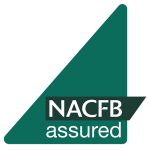By Matthew Dilks, Bridging and Commercial Specialist, Clever Lending
Bridging finance is often associated with landlords and property investors in need of a quick cash injection in order to fund housing projects or purchase a property before renting it out or doing it up and selling it on for a profit.
While there is of course an element of truth to this, the fact is the bridging finance market is an excellent funding solution for all would-be borrowers and offers enormous potential to everyday homeowners looking for greater flexibility when it comes to comes to moving home.
In recent years, some of the long-held stigmas around bridging finance have dissipated, as more and more brokers have become more comfortable offering it as a solution to clients. However, because this type of finance does have higher interest rates, shorter terms and the need to have a clear exit strategy, many will rely on a business like Clever Lending to source, place and process such cases due to added complexity.
The fact is though, if used correctly and with the right exit strategy in place, bridging finance can prove to be a cost-effective and efficient way for borrowers to navigate the complexities of the house purchasing process.
Bridging loans explained
There are two types of bridging loans available in the market; regulated and unregulated, with the latter primarily being used by property developers and landlords for business purposes either for residential or commercial properties.
In contrast, regulated bridging loans are authorised by the Financial Conduct Authority and are used solely by residential owner occupier borrowers looking to carry out refurbishments and renovations or break a chain because they want to purchase a property before they have sold their current home.
Should I get a bridging loan?
Demand for regulated bridging loans has increased over the last few years as the financial pressures brought on by the Covid pandemic and subsequent cost-of-living crisis has led borrowers to seek out more efficient and cost-effective forms of capital raising.
In fact, regulated bridging loans accounted for almost half of all transactions (44%) in 2022 according to MT Finance’s Quarterly Bridging Trends Survey, a trend likely to continue as more brokers and borrowers begin to acknowledge the benefits of this type of financing.
Increasingly, we are starting to see a growing number of borrowers use bridging finance for downsizing purposes because they want to move quickly or on their own terms. In many cases, these customers are in or approaching retirement and have built up a significant amount of equity in their current home.
In this situation, taking out a regulated bridging loan against their property enables them to release the cash tied up in their security and purchase a smaller property outright. When their existing home is then sold – the exit strategy – these funds can then be used to pay off the bridging loan.
Bridge loan fees
One of the most common misconceptions around bridging loans is the fees associated with taking out a loan, but it is worth remembering that while the headline rate on most bridging loans may initially appear to be higher than a standard residential mortgage, any interest charged is over a much shorter term, and therefore may seem more prominent.
In addition, although the majority of loans are taken out for a term of 12 months, borrowers looking to downsize usually only need a bridging loan for a short amount of time, typically between two and six months, depending on how quickly they sell their existing property. This reduces the interest payable considerably.
Bridge loan example
For example, a £250,000 loan taken out at a rate of 0.6% over 12 months would cost approximately £272,060. If this was repaid within three months, this would be £257,800, a saving of £14,260, within six months it would be £262,469 – a saving of £9,592. Repaying the loan in nine months would result in a saving of £4,839 (£267,221).
Given the fact that the majority of borrowers looking to downsize typically have an LTV of 50% or less, they will also likely have access to the most competitive rates on the market as well as automated valuations (AVMs), enabling them to make even greater savings.
Loans can be arranged in a short timeframe, typically three to five weeks, which also makes them ideal for borrowers willing to pay for the convenience of gaining swift access to finance.
As a general rule, bridging loans are often only available through mortgage brokers, so it is imperative that any borrower wanting this type of financing seeks professional advice. Not only will this ensure you get a solution best suited to your needs, it will also help to dispel any myths and provide reassurance around this important and complex area of the mortgage market.




















